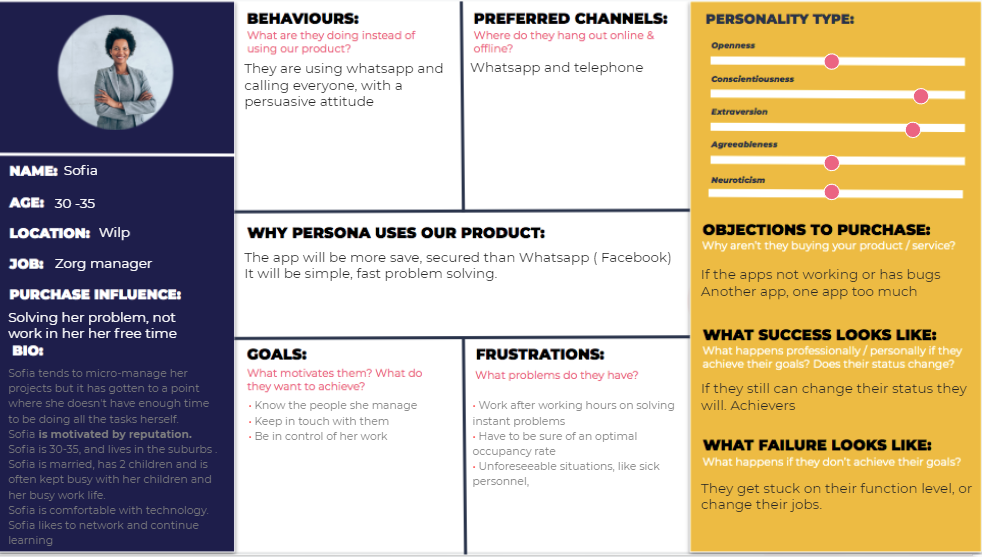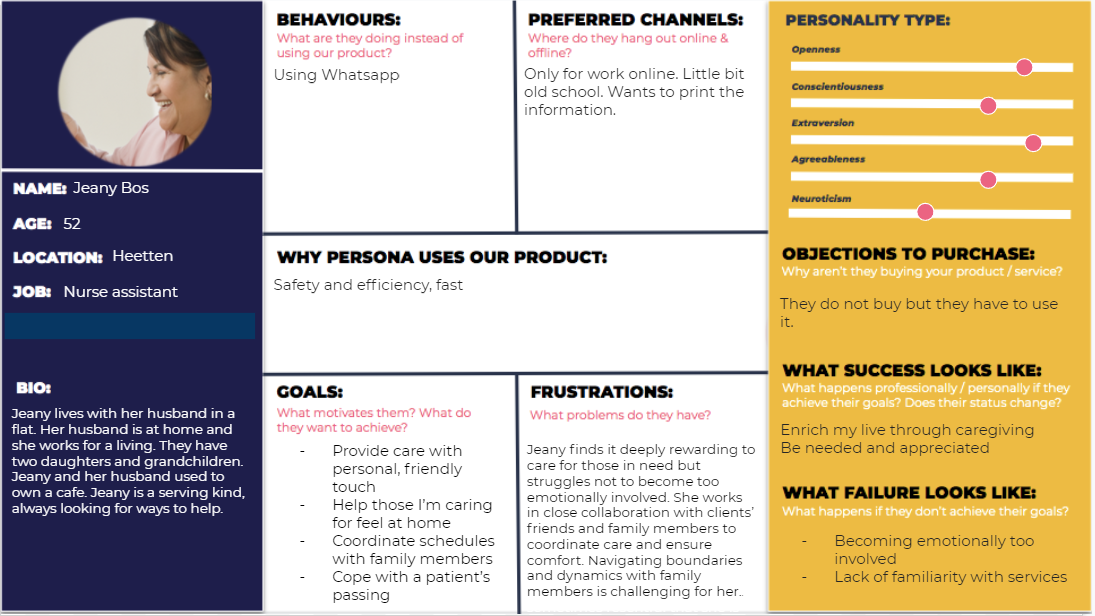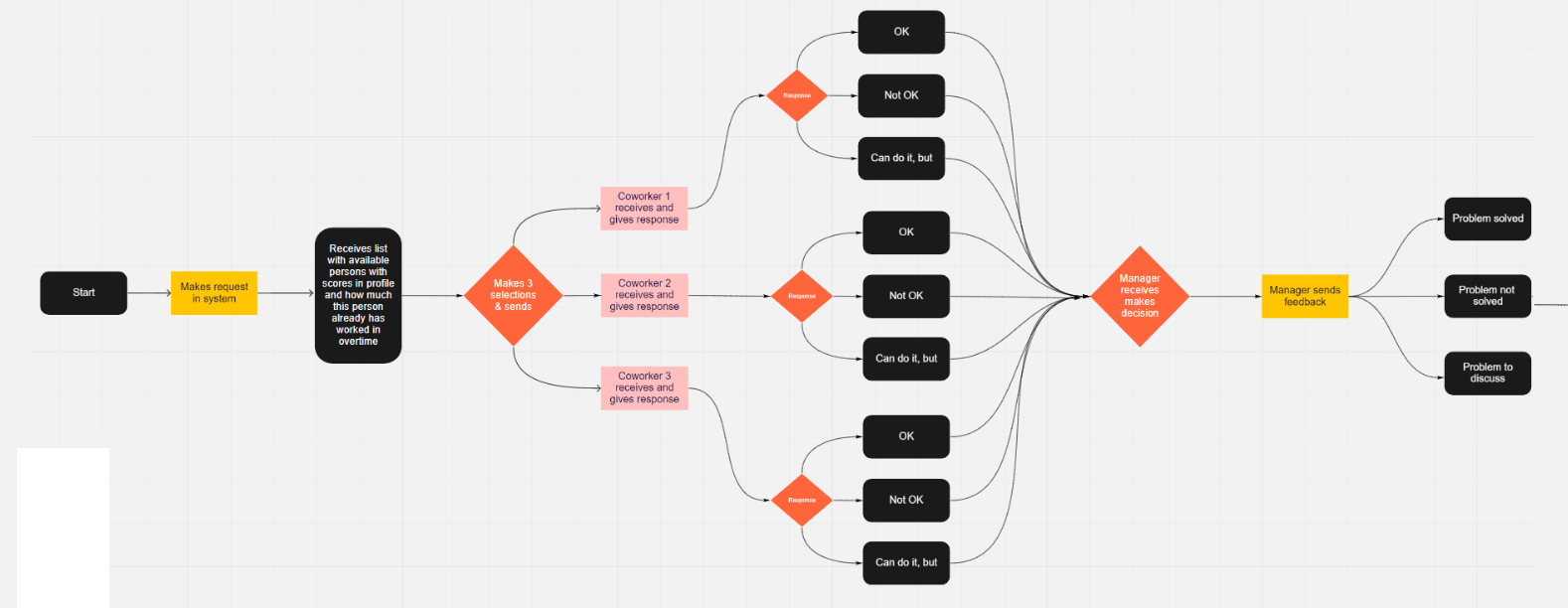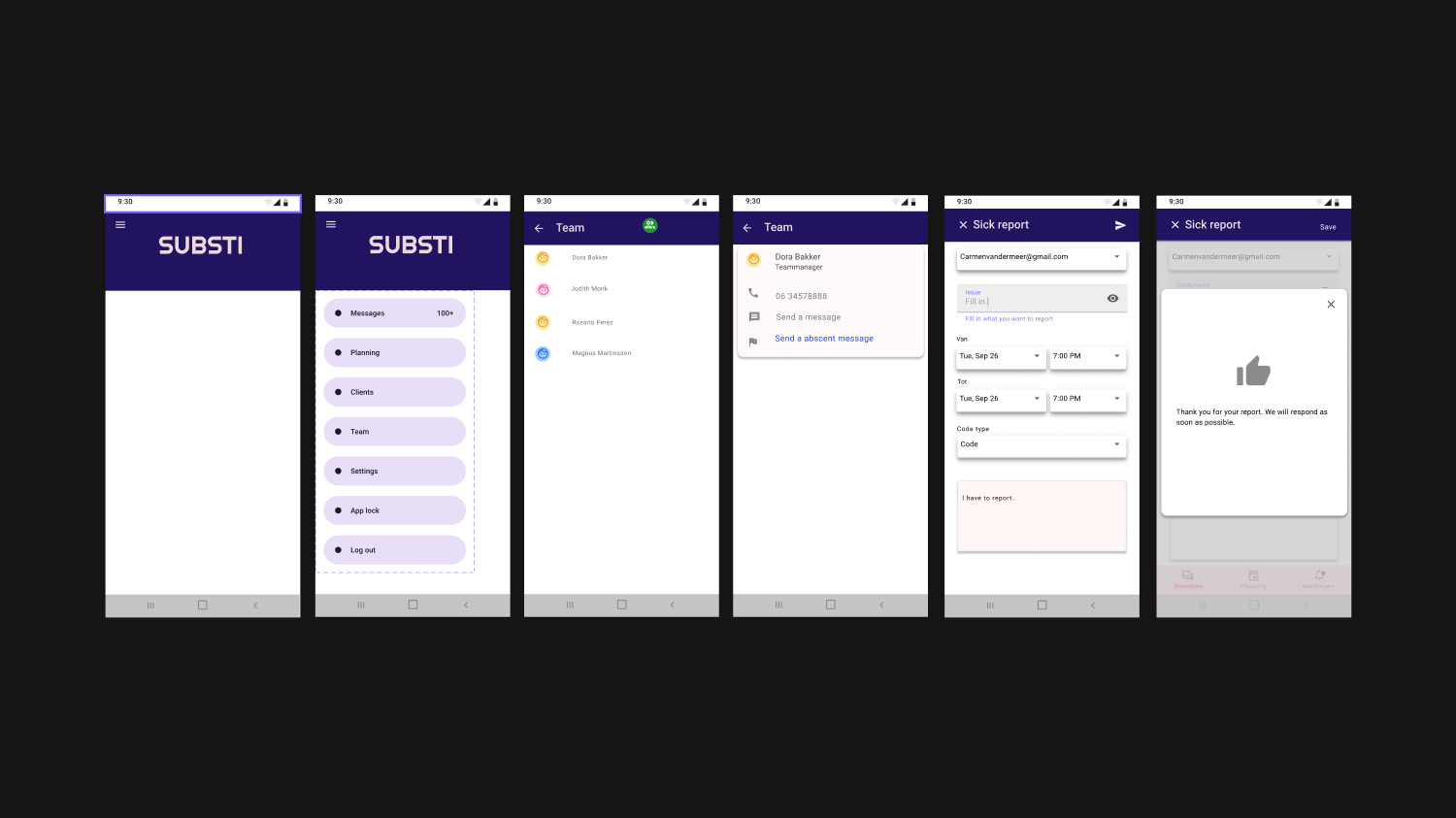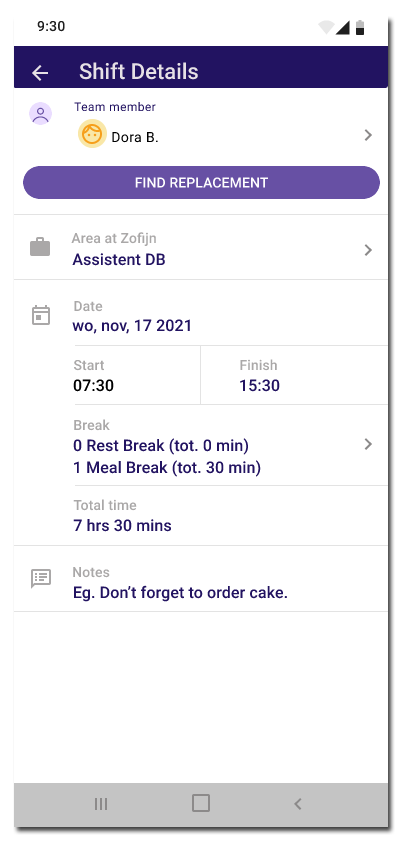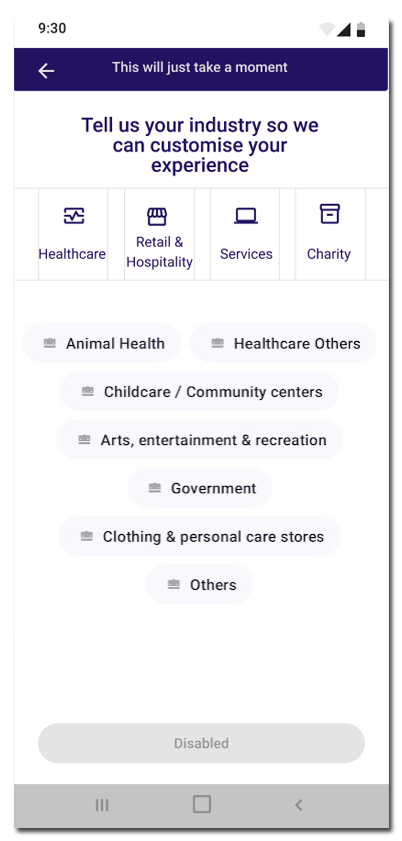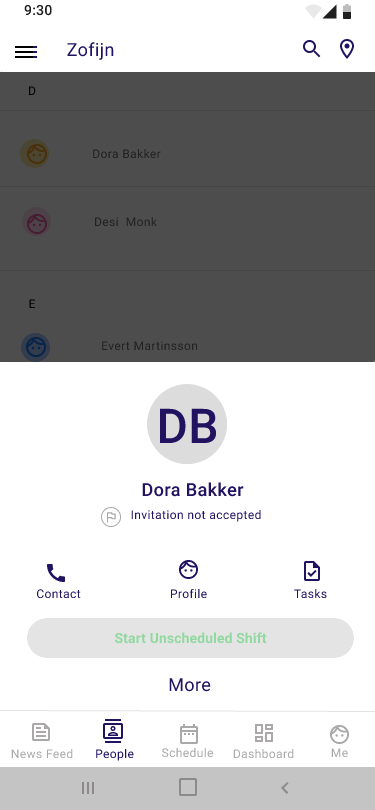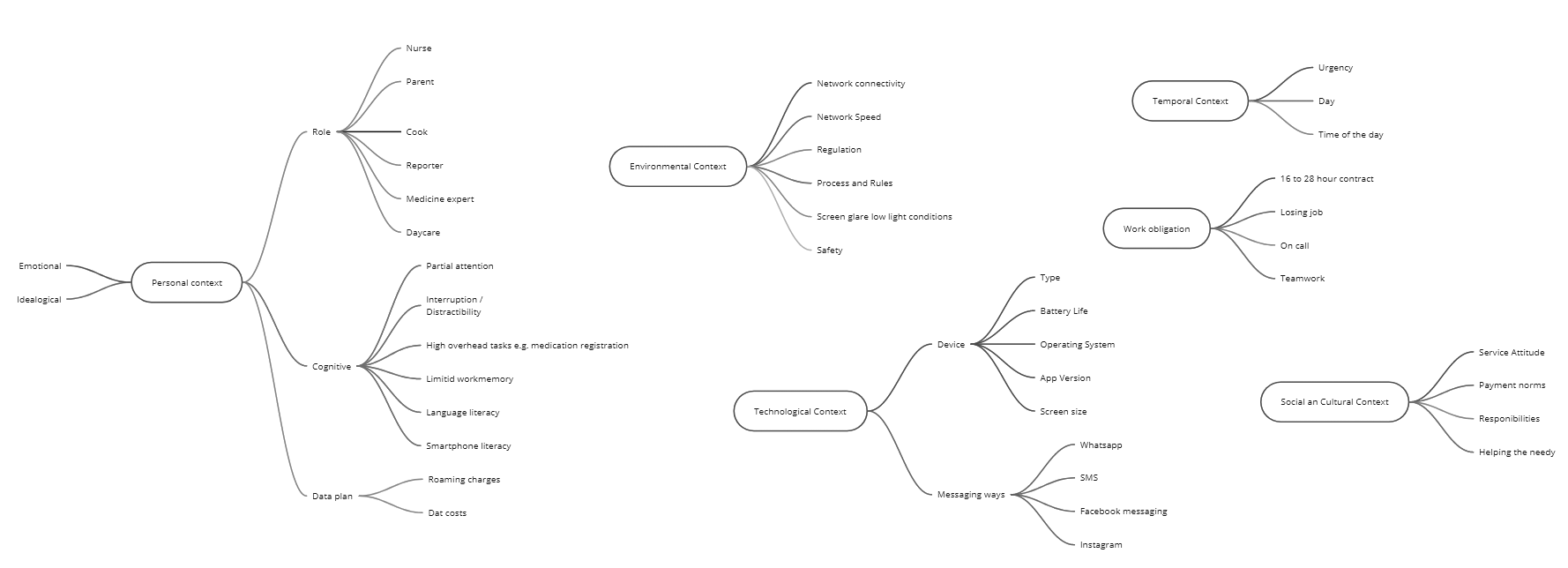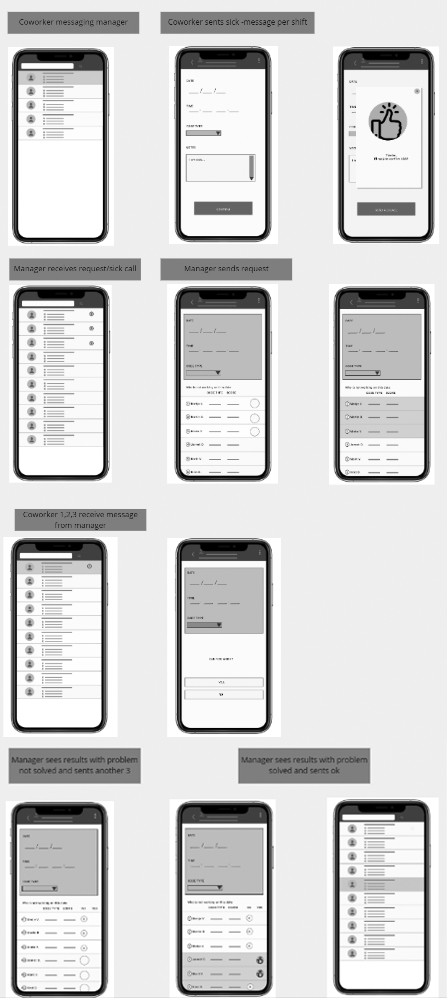ENJOY HELPING OUT
Since the use of Whatapp is familiar,
it is quite often used as a communicator
within organizations between coworkers.
Because it is well-known that the owner of Whatsapp is Facebook,
this should not be used in organizations with high standards in data security.
I was looking in the organization and amongst the coworkers
to turn this Whatsapp experience into a safer experience.
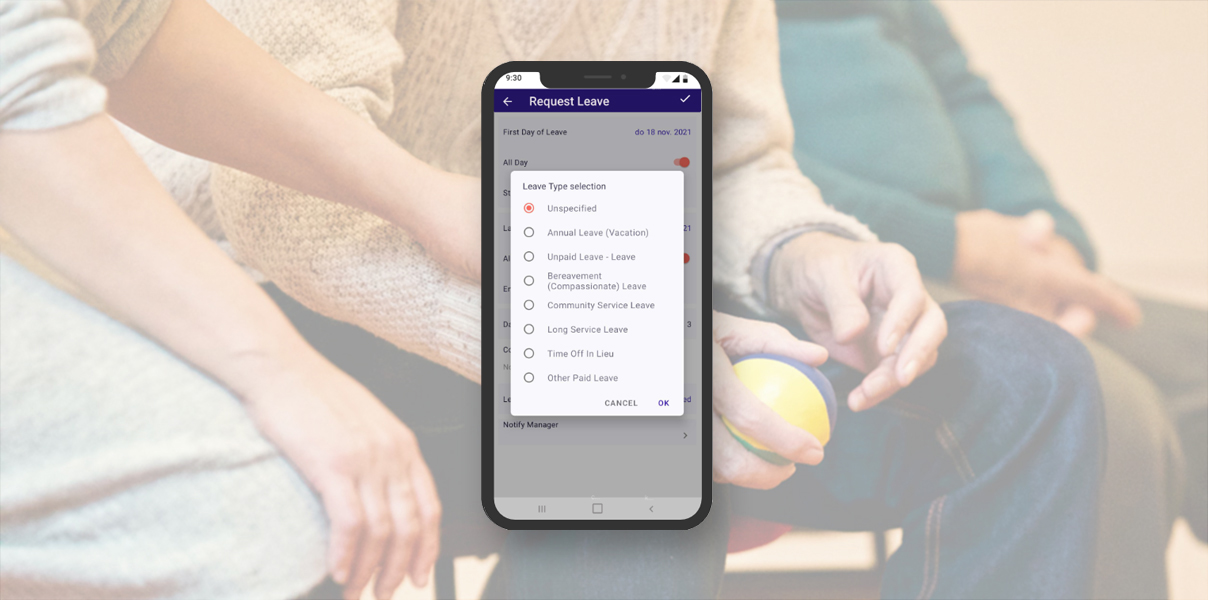
THE CHALLENGE – KICKOFF – THE DISCOVERY – DEEPER INSIGHTS – REFRAMING THE PROBLEM – THE REDESIGN
THE CHALLENGE
CAPTURE THE MAGIC
My goal for the project was to capture the magic of finding in one click. The original premise was simple: tap a button, find a replacement. However, that turned out to be too simple. My ambition was to create a scalable platform that embraced a rapidly evolving business and a more diverse user base.
My high-level goals were to:
1. Make it fast and easy to use for everyone, everywhere.
2. Give managers and coworkers more control over their time.
3. Create a platform for deeper engagement.
MY ROLE
This case study mainly shows how you can collect insights with UX research and process them into a design for a new application. UX research from interviews and surveys, but also data from the working environment and the means of communication, is discussed. After analyzing in the form of personas and empathy mapping, I looked at spectrums and situations in context.
Before I could jump into designing, it was important to define success and understand the health of the replacement experience at scale. I reframed the problem and then started designing a concept. I explained my design strategy and asked the questions, How might we…? Coming up with 4 principles, this was the beginning of ideation. I did not work out this app because it is too big to showcase. But I think I show with this case study how I work and how I think about designing user experience.
KICKOFF
DIVE STRAIGHT INTO THE CHAOS
Without pre-existing insights, I explored how employees were getting around.

EARLY INSIGHTS FROM THE FIELD
I monitored the existing use of WhatsApp with all the co-workers divided into two divisions at healthcare facilitation. My goals were to understand the challenges co-workers and managers faced and the workarounds they employed.
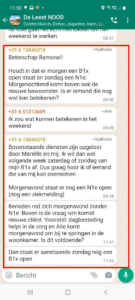
MORE PROBLEMS TO SOLVE
Calling for sick leave. On top of this problem of a call for a sick report, there is more than one problem. There is this swap deal. Plus more sick reports. Co-workers get creative: Ask the cleaning lady if she can come and be present.
Time: 11.42
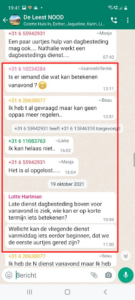
MANAGER BREAKS IN
Selforganizing work. Cry for help. No one can help. The manager has organized it outside the group. But then they go on. Another sick report.
Time: 11.00
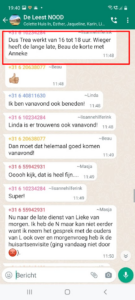
CLEANING LADY TO RESCUE
They ask the cleaning lady to help! This is charity work. They have a problem that cannot be solved within a group of co-workers.
Time: 11.50
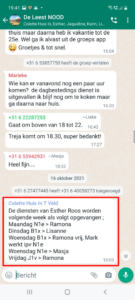
MANAGER HAS TO DEAL WITH THE PROBLEM
No more hassle. Who is available can do the job. No more finding out reasons not to work.
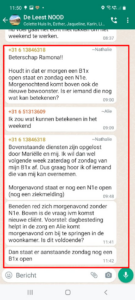
HALF WAY SOLVED BUT WHO CAN SWAP?
I’m reading problem can be solved if someone wants to swap shifts.
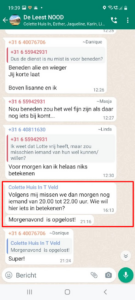
MANAGER LET’S HERSELF DRAG INTO THESE CREATIVE SOLUTIONs
The manager seems to be dragged into this communication. She gets to think like the employees.
More user research
I was working with them as a UX researcher undercover to experience their problems. I conducted interviews with questions from the empathy map, what do you feel, think, say and do when the problems occur. And 5 times why, why, why, why, why. With all the data I collected, I could easily build personas.
Personas
THE DISCOVERY
EMPLOYEES EXPECTATIONS CHANGED OVER TIME
I was surprised by the issues I found. If you ask why 5 times you know why.
But after some thinking, it became clearer that employees and managers expected the experience to just work with minimal effort.
__________
“Managers and coworkers expected the experience to just work with minimal effort “
____________
How bad was the replacement work experience with more challenging technological and environmental contexts? Curiosity revealed an opportunity to perfect the replacement work experience for everyone, everywhere.
DEEPER INSIGHTS
WORKING BACKWARDS FROM PERFECT
Before I could jump into designing, it was important to define success and understand the health of the swap replacement shift experience at scale.
Before the design, complaint rate i.e the rate at which an employee complains about his or her colleague was the only proxy I had used to measure swap/ replacement shift quality.
- Experiences are complex: feeling (motivations), thinking (mental models), doing (behaviors) in specific times, places (context) (Cris Risdon)
I unpacked the concept of the perfect swap/ replacement shift and modeled for the dimensions of time and anxiety and satisfaction.
I used UsabiliyHub and used this framework to investigate the swap/ replacement shift around.
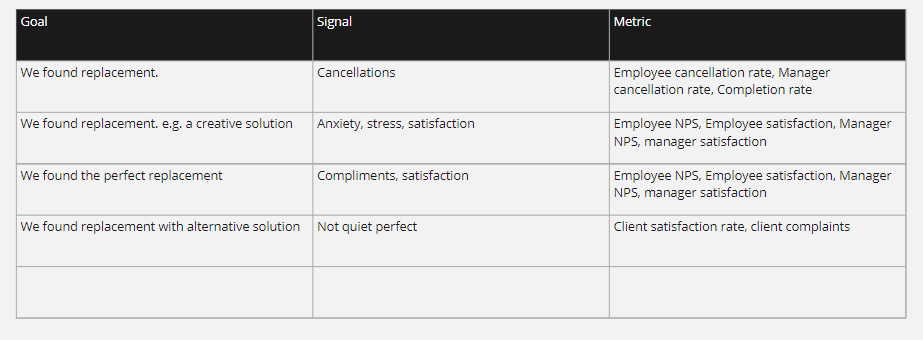
MOST REQUESTS REQUIRE ADDITIONAL PHYSICAL OR COORDINATION EFFORT
Digging into the data revealed some big insights into the swap/replacement shift experience.
Almost all requests involved some extra coordination effort such as a phone call to clarify the need and persuasion.
This data showed that the experience was hardly a happy, positive experience.
The time and energy spent finding and persuading someone to work is not a nice job to do.
Waiting time translates directly into stress and anxiety situations.
_______
“On the basis of a panel for 20 countries and for the years 1996–2002, it is econometrically shown that the main explanatory factors are the generosity of granting sick leave, the strictness of employment protection and the employment of older persons.”
________
THERE IS NO CLEAR RULE
Who has to work as a replacement is not clear.
THERE IS NO REWARD
Who gets to work, gets only a Thank you.
THEY LIKED TO SWAP SHIFTS OR get REWARDED
Co-workers ask if you can swap with their hours.
IS ENGAGEMENT ENOUGH
There is not a reward, but an occasional thank you with flowers.
REFRAMING THE PROBLEM
SELFORGANIZING CAUSE CHAOTIC FEEDBACK ON HOW TO SOLVE THE PROBLEM CREATIVELY
WhatsApp urges you to give feedback very quickly without spending a little time to think it through. What you get is that simply everyone who doesn’t want to work response with I cannot work, because.
Or co-workers say I can work 2 hours but then I have to go. It appeared that cleaning personnel want to work extra hours just to be there and help with coffee and in the kitchen. This cannot be their task. I wonder if they get paid.
__________
“… how might we help managers and co workers to solve this replacement problem?”
__________
This begged the question, how might we help managers and co workers out of this problem? Our proposal was Substi, a replacement concept created on behalf of managers and co workers.
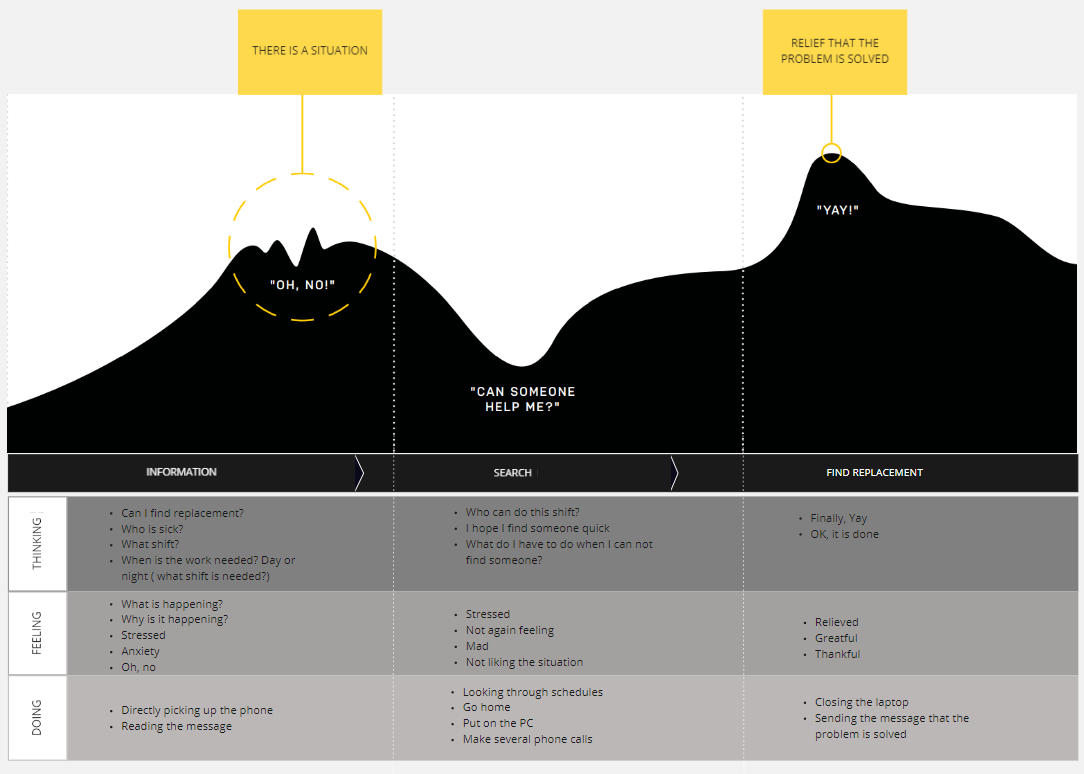
A map of the replacement journey broken into three phases: getting information, searching for a solution and finding replacement
THE FINDING REPLACEMENT APP
INTRODUCING THE SUBSTI APP
Free time is precious to be with your family, loved ones or friends, Substi gives you your time back by finding replacement fast, effortless, and calm. Substi makes sensible decisions for you balancing shifts the responsible way, choosing the right person for the job.
SIMPLE REQUEST
Make a request for replacement, we do the math.
WE’VE GOT IT COVERED
Running in healthcare, retail or hospitality or charity?
This should work in all kinds of areas.
FLEXIBILITY AND THE FINAL SAY
See when and where you have to work , but be able to say no.
When you are in a situation you could not have foreseen.
There is the possibility to cancel. You have the final call.
HOW I GET THERE
GET DONE WITH RESPONSIBLITY, BUT GET THE JOB DONE
Three primary questions informed my design strategy:
1. How can you make everyone accept the solution?
2. What context needs to be considered.
3. What is the perfect solution?
4. Not feeling the responsibility as a reason to work.
Early on, it was important to understand the different factors that may influence the manager and co-worker experience. I mapped all the possible concepts and translated this into the spectrums and situations framework.
A MORE INCLUSIVE DESIGN
Experiencing the problem in real-time, when working in shifts in healthcare, I came with the idea to solve this replacement problem that is getting out of hand. To move beyond the existing biases, I tried to an approach to designing for everyone that works in shifts. Healthcare, retail & hospitality, services, charity to begin with.
The spectrums attempt to highlight the range of temporary or permanent challenges to consider when a person is calling absent and dealing with a replacement.
The situations attempt to highlight situational challenges that everyone experiences. A situation is a temporary context that affects the way any person interacts with the replacement app for a short time.
This framing was used to destroy any stereotypes that the team had about one specific targetgroup. The goal was to create design solutions that scale and extend to any combination of these contexts from the outset.
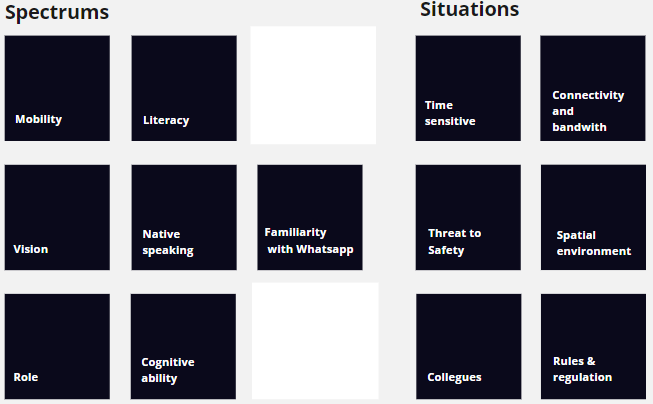
DEGRADATION TO ADAPTION
This framing was used to destroy any stereotypes that the team had about one specific targetgrouptarget group. The goal was to create design solutions that scale and extend to any combination of these contexts from the outset.
I used this additional hierarchy of needs framework to reframe our conversations about quality and features.
Instead of starting with a healthcare-centric design and degrading for what the team deemed as the other challenging marketplaces, we needed to start with a minimum bar of quality to enable replacement for people in all contexts.
The framework helped shift from unproductive questions like “How is this going to degrade for schools?” to “How can we take negative emotions away for working in replacement?”
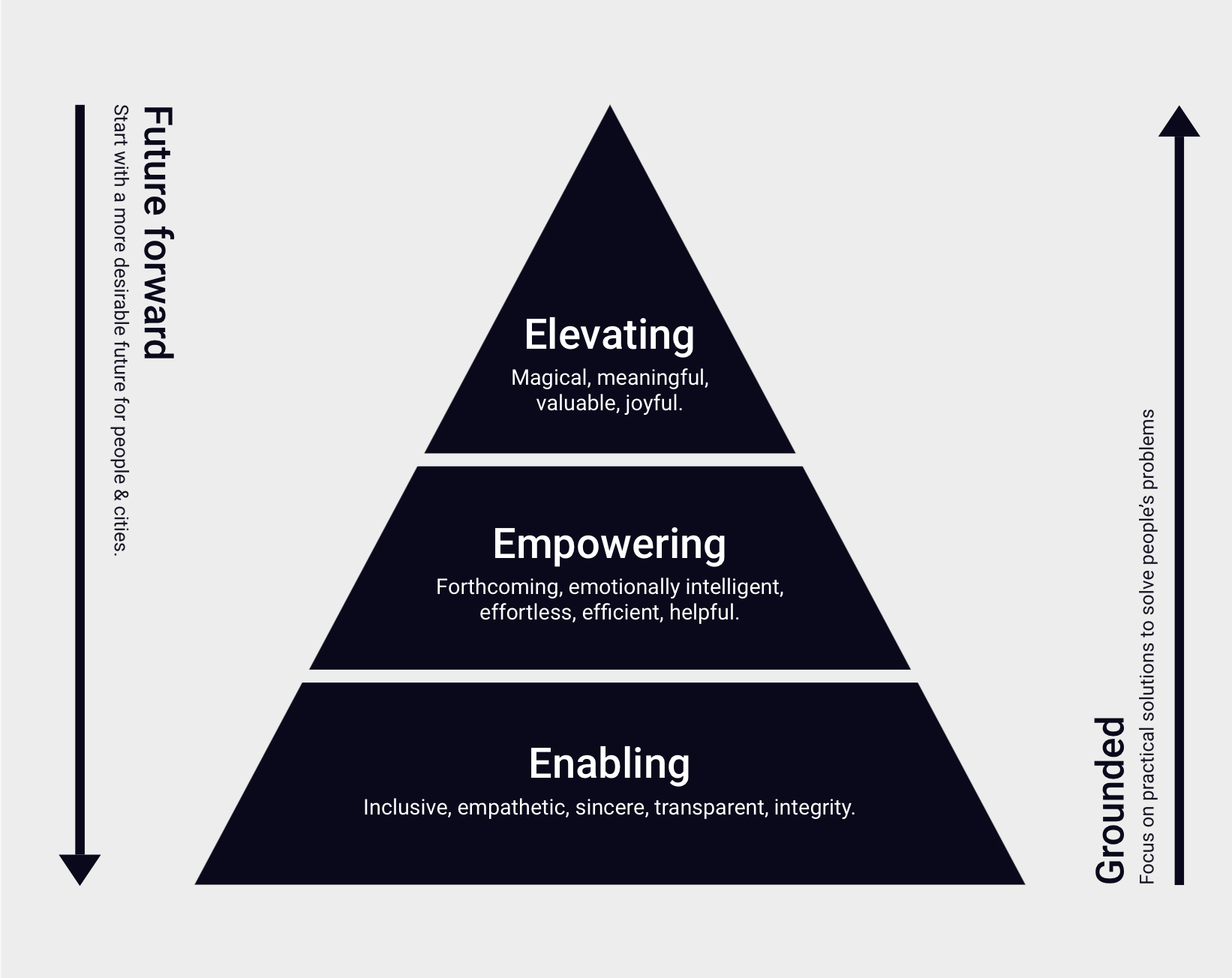
WORKING BACKWARDS FROM PERFECT
Four key design challenges emerged
1. How might we solve the handling: calling absent and looking for a replacement.
2. How might we design a concept that solves the problem that minimizes effort and saves time?
3. How might we remove the need for a telephone call.
4. How might we take negative emotions away from doing the replacement job.

FROM INACCURATE TO PRECISE
BETTER UNDERSTANDING YOUR CO WORKERS
The major reason not wanting to work in replacement is having made appointments on their day off. Or just wanting to have a day off to rest. Or must there be a reason to enjoy your day off?
The data revealed that:
1. 50 % have physical complaints Headaches, Back complaints, Burn out, Covid
2. 10% Don’t know anymore how to handle – work it’s too much
3. Have to do tasks I did not apply for. ( When everybody has to do everything)
4. I want to do extra hours, more pay.
Based on these insights I proposed two key features ideas.
Right profile ( it must be clear who wants to work extra hours or wants to swap shifts)
More engagement. Rewarding to help better understand who can do the job.
Central to the features were these key ideas:
1. Building profile with scores, who is the best fit ( 100%, 90%, 80%, etc.)
2. Every time a co-worker helps with replacement is rewarded with points to a level when points can
be traded for gifts, time off, money, vacation trips, diner vouchers, etc.
From Inefficient to Optimized / Immutable to Fluid
Giving Managers back their time
Knowing the co-worker’s profile, including background, work experience, knowledge, certifications, willingness to work extra hours on particular days, hourly rate allowed us to do the heavy lifting and select the most optimal person for the job.
The system needs to be smart enough to just work when it could, and humble enough to intervene when it couldn’t. This system called adaptation was by far the most complex problem of this project.
Foundational to the adaptation framework were these concepts:
1. A confidence score would determine whether to choose a person on behalf of the user,
or to disambiguate the selection.
How we calculate this confidence score would be an ongoing project to improve.
2. We need to respect manager control and agency.
Design patterns need to allow for opting in, opting out, or taking complete control.
3. The system needs to be flexible enough to learn about co-worker willingness.
Don’t design based on the assumption we will know the right answer.
Intelligent selections
Making replacements efficient required dispatching the most optimal* person. This presented several design challenges:
1. Defining the most *optimal person for the job.
2. Creating heuristics to decide the optimal profile.
3. Adapting when the 100% optimal person is not available.
4. Balancing smart defaults with choice and control.
*Optimal refers to the person with the highest scores in his profile.
From hand drawn sketches to first wireframes.
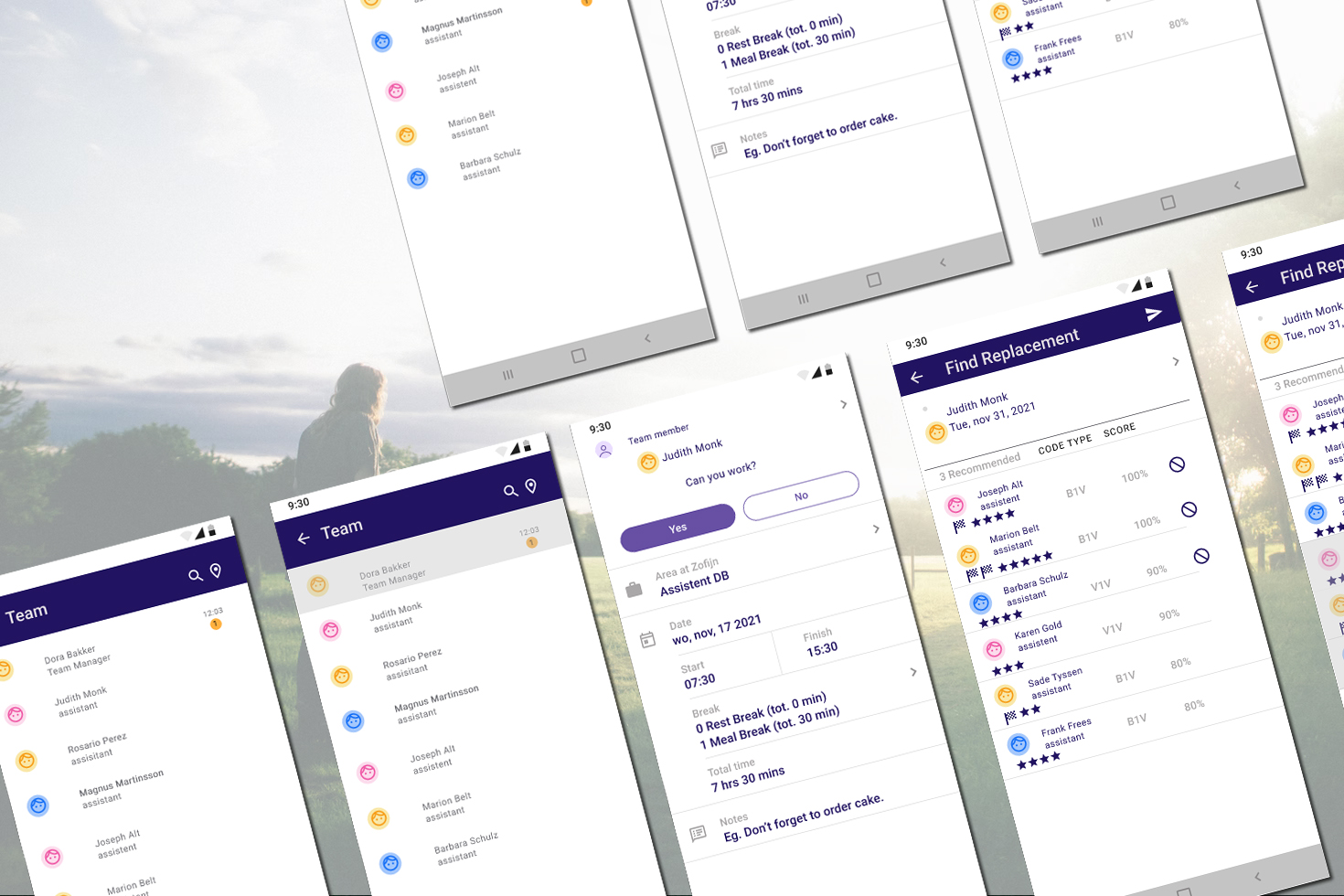
I choose Substi for a workname. These are high fidelity wireframes. After cleaning up the mindmap. There is more to come….

